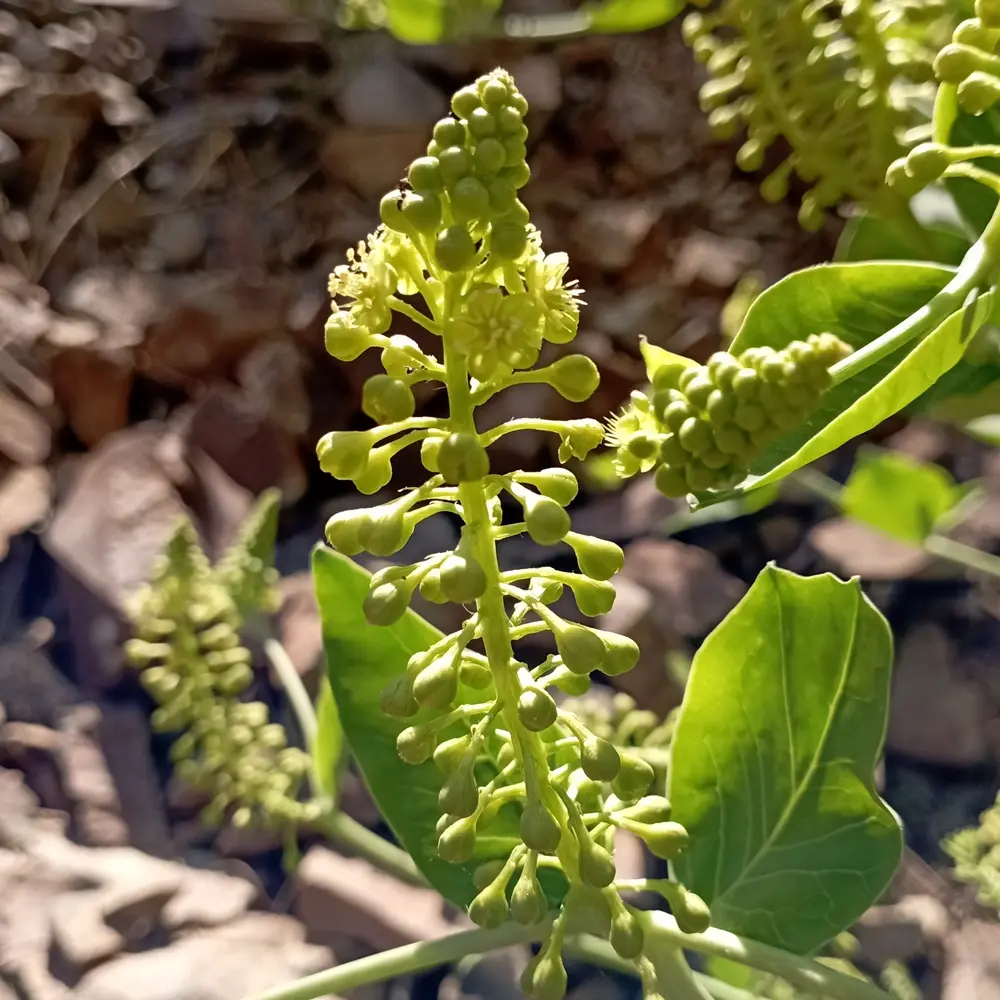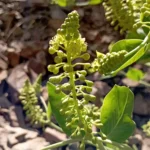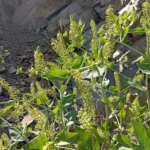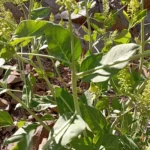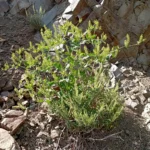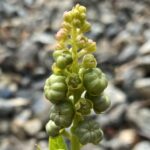Φυτόλακκα η παχνώδης
Etymology of Phytolacca pruinosa
The etymology of Phytolacca pruinosa combines descriptive elements of the plant's appearance. The genus name, Phytolacca, is derived from the Greek word "phyton" [φυτόν] meaning "plant," combined with the Latin or Persian/Sanskrit "lacca", referring to a deep red resinous dye or lacquer. This alludes to the characteristic reddish-purple juice extracted from the berries of many species within this genus.
The specific epithet, "pruinosa", comes from the Latin word meaning "hoary" or "frosted," describing a whitish, powdery, or waxy bloom often present on the plant's surfaces, such as its leaves, stems, or fruits, giving them a frosted appearance. Together, the name indicates a plant with red-juiced berries that also exhibits a distinctive frosted or glaucous coating.
Where Phytolacca pruinosa grows
Phytolacca pruinosa is a lesser-known species within the Phytolacca genus, commonly referred to as pokeweed or inkberry, though P. pruinosa itself may not have a widely recognized common name in English. It belongs to the Phytolaccaceae family.
The native range for Phytolacca pruinosa is the Eastern Mediterranean region, where it is found indigenously in countries such as Cyprus, Turkey, Lebanon, and Syria. It thrives particularly in subtropical biomes within these areas, including mountainous regions like the Troödos Mountains in Cyprus.
Distinguishing Characteristics
Phytolacca pruinosa is typically a perennial herb or a small subshrub, often growing to about 1-2 meters in height, though some sources describe it as a shrub up to 3 meters. Its specific epithet, "pruinosa," refers to a distinctive whitish, waxy, or powdery coating (a "bloom") that can be present on various parts of the plant, including stems and leaves, giving it a "frosted" appearance.
A defining feature of the genus Phytolacca are its berries. In P. pruinosa, these develop from the flowers into spherical, segmented berries that turn a glossy, deep purplish-black when mature. They contain a characteristic red-purple juice, from which the genus name Phytolacca (plant-lacquer/dye) is derived. The berries are arranged in dense clusters along the raceme.
Phytolacca pruinosa is toxic
Like other species in the Phytolacca genus, Phytolacca pruinosa has limited direct usefulness for human consumption due to its inherent toxicity. All parts of the plant, especially the roots, seeds, and mature berries, contain saponins and other toxic compounds (e.g., phytolaccatoxin, phytolaccagenin) that can be poisonous if ingested. Symptoms of poisoning can include severe gastrointestinal distress (nausea, vomiting, diarrhea), abdominal pain, and in severe cases, neurological effects. Therefore, it is not recommended for consumption without expert processing or traditional knowledge, and should generally be avoided.
Historically, and for some other Phytolacca species (though less documented specifically for P. pruinosa), the berries have been used as a source of red or purple dye for textiles or food coloring (though often needing mordants to fix the color).
In some traditional medicine systems, certain Phytolacca species have been used topically or in highly processed forms for their purgative, emetic, or anti-inflammatory properties, but always with extreme caution due to their potent toxicity.
It is occasionally cultivated as an ornamental plant for its attractive berries and foliage, particularly in regions where it is native or where its invasive potential is managed.
The plant in Cyprus
There are two Phytolacca species found in the wild Cypriot habitat. Phytolacca pruinosa is encountered only on the Troodos Mountains Region, between elevations of 900-1700 meters. The specimen in the pictures was recorded at Mylikouri village, Nicosia district, at an elevation of approximately 900 meters. Its flowering period, in Cyprus, is usually between April and July.
